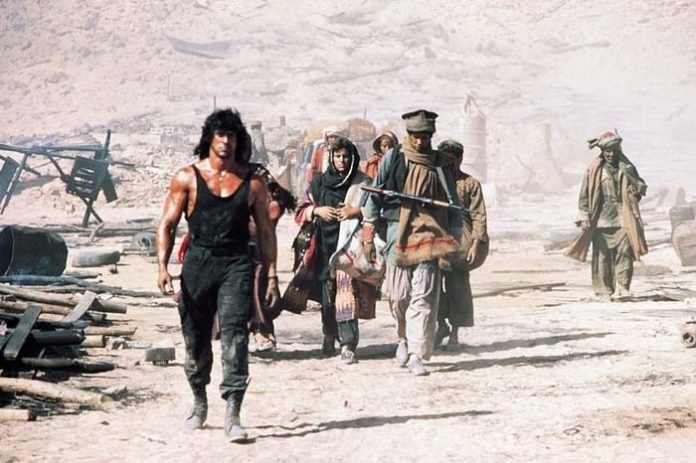
The attacks on 9/11 have since had a profound effect on life in the United States, but not nearly as much as the Middle East. While the attacks led to an invasion by the U.S.—a seemingly never-ending “War on Terrorism,” and the death of hundreds of thousands—the story actually began roughly 65 years ago in Iran. The following report outlines the U.S.’s involvement in the Middle East, as well as the impact it has had on the region.
The “Western World” first became embroiled in the Middle East towards the end of 1914, when the British arrived in southern Iraq to protect oil supplies from Persia; however, the United States didn’t get involved until World War II. The beginning of the Cold War marked the beginning of the U.S. government’s participation (or meddling) in the politics of this region of the world.
Iran:
During WWII, American, British, and Soviet troops were stationed in Iran to protect Iranian oil and transfer supplies to the Soviet Union. However, once the war was over, Stalin’s troops remained in parts of northern Iran (Foner, 2014, p. 898) until U.S. President Harry Truman threatened to forcibly remove them.

With the U.S.’s focus now on the Soviet Union, and the beginning of the Red Scare underway, Truman made it clear to the Soviets that the Middle East would be a focal point of the Cold War. Three main goals were established: Opposing Soviet influence over the region, supporting and protecting the new State of Israel, and of course, oil (President Franklin D. Roosevelt had already been sniffing for oil in 1945 when he met with the Saudi King, Abdul Aziz).
The first major influence the U.S. had on the area was its support in forming the State of Israel, which the United Nations (UN) had opposed; however, the first real action taken in the Middle East was an illegal coup conducted in 1953 by the CIA. True to American fashion, President Eisenhower authorized the CIA to depose Mohammed Mossadegh, the popular prime minister of Iran, even though it was in direct violation of the UN charter which barred member states from taking military action against another, except in self-defense (Foner, 2014, p. 953).
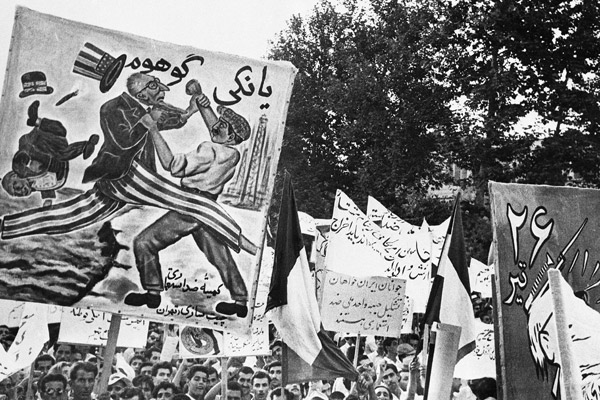
Mohammed Mossadegh had been elected democratically, and his administration was a progressive one. He introduced numerous social and political reforms, such as social security, rent control, and land reforms; however, he was determined to reduce foreign corporate control over the Iranian economy and, as a result, he nationalized the Anglo-Iranian Oil Company, which had been under British control.
This fateful decision incited a swift response from Britain and the U.S., who branded Mossadegh a communist. Mossadegh, in fact, was not an agent of Moscow, nor was he a communist. He was a nationalist who had a clear, democratic plan to progress his country into an independent nation—much like the Founding Fathers of America.

Mossadegh was replaced by General Fazlollah Zahedi, who had been handpicked by the CIA and SIS (the British Intelligence Service). This initial deception planted the first seeds of distrust and hatred towards the U.S. government.
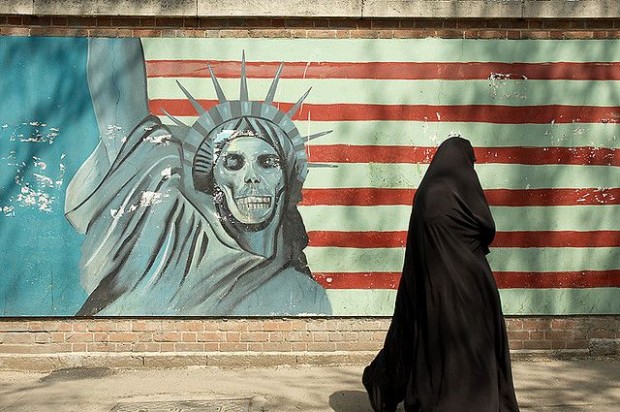
Israel:
The U.S.’s next involvement in the Middle East came in 1956 with the newly developed Israel, who—aided by Britain and France—invaded Egypt after Egypt’s nationalist leader, Gamal Abdel Nasser, nationalized the Suez Canal. Eisenhower was furious that he had not been consulted before the attack, and forced Israel and its cohorts to abandon the invasion.

Britain’s actions in this fiasco inspired the U.S. to take its place as the dominant Western power in the Middle East, and in 1957, this expanded to the principle of containment in the region with the Eisenhower Doctrine. Under the Eisenhower Doctrine, the United States pledged to “defend” the Middle East from communism and nationalism, and a year later, Eisenhower dispatched 5,000 troops to Lebanon, a pro-Western, Christian-dominated nation, to protect their government against Nasser’s nationalist front. Although the deployment was brief, it ended with a civil war in Lebanon (Foner, 2014, p. 953).
During John F. Kennedy’s administration (1961-1963), a “special relationship” with Israel was attempted, and while this relationship was solidified during Kennedy’s time in office, it failed to mollify Arab leaders. Kennedy increased economic aid toward the region, and worked to diffuse some of the effects of his predecessors’ “cold war policies regarding Arab regimes.”
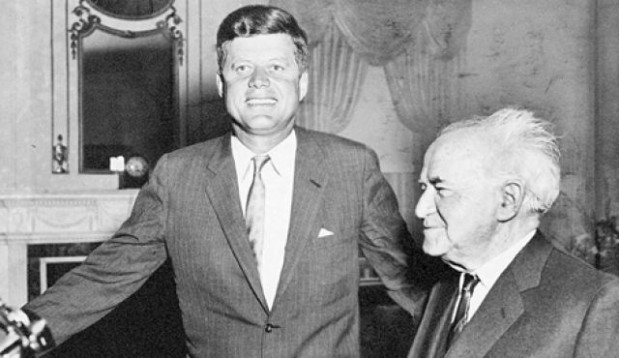
The next time the U.S. found itself involved in Middle Eastern politics was during the Johnson Administration, when the still newly-formed Israel conducted a series of attacks against Egypt, Syria, and Jordan, known as the Six Day War of 1967. Following a mobilization of Egyptian forces in the Sinai Peninsula, Israel preempted what it viewed as an impending strike. Johnson put the Navy on alert, but compelled Israel—who was still threatening to take the situation further—to agree to a ceasefire when the Soviet Union threatened to get involved.
Another altercation between Egypt and Israel happened in 1973 on the Jewish holy day of Yom Kippur, when Egypt, Syria, and Jordan tried to regain territory they had lost during the Six Day War. While it seemed Kennedy began to recognize the Red Scare for what it was (referring to the over-embellished communist-scare that swept the Western world), Nixon continued to embrace it, and with the Cold War in mind, he provided Israel with an armament airlift.
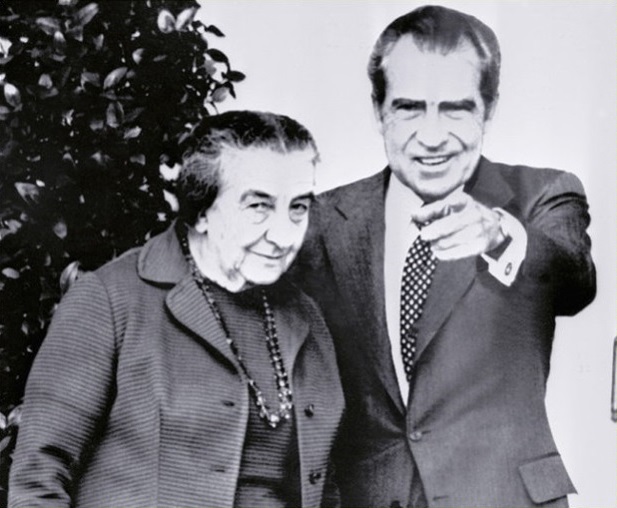
The Soviets objected to Nixon’s decision to aid Israel in the situation, and after threatening, once again, to intervene militarily, the U.S. was able to persuade Israel to accept a peace-treaty. Then, in 1974 and 1975, the secretary of state, Henry Kissinger, negotiated the “disengagement agreements,” first between Israel and Syria, then Israel and Egypt, formally ending the hostilities and returning some of the land Israel had taken from the other countries.
By now, you might be noticing a pattern: Israel, like a spoiled, chubby, sticky-faced child, throws a tantrum, and the U.S., whether Israel is in the right or wrong, comes running to coddle them. One can almost imagine the Soviet’s frustration in the matter—the last thing anyone wants to see is an over-indulged little brat being handed sweeties from their mother in an effort to get them to shut-up. It just makes you want to slap-the-shit out of both of them.
Carter’s administration saw some positive developments in the Middle East with the 1978 Camp David Accords and the 1979 peace treaty between Egypt and Israel, which led Israel to return the Sinai Peninsula to Egypt.
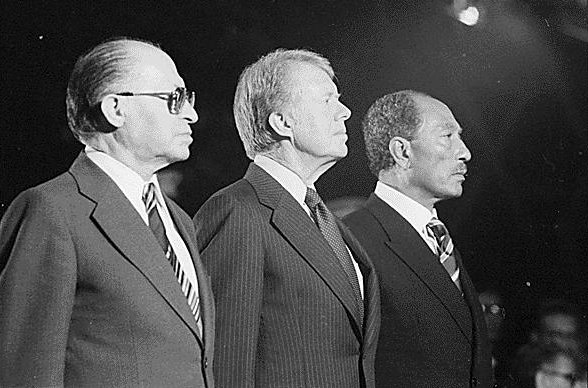
Unfortunately, with the Iranian Revolution, Carter’s administration also felt the blunt of the Iranian citizens’ anger towards the U.S. who, thanks to the CIA’s illegal coup in 1953, restored the monarchy in Iran. Chew on that for a second—Mohammed Mossadegh was a democratic leader, and the U.S., a country that loves to boast about its democracy, had this man illegally removed to replace him with a monarchy, which the U.S.’s Founding Fathers loathed. Clearly, freedom and democracy should be available to everyone, unless it obstructs the U.S.’s agenda, of course.
The Iranian Revolution culminated in 1978 with the regime of Shah Mohammad Reza Pahlavi, a somewhat modern yet ruthless leader, and it paved the way for the establishment of the Islamic Republic ran by the Shi’a cleric, Ayatollah Ruhollah Khomeini, who despised democracy all together. On November 4th of 1979, with the U.S. now known as the “Great Satan” (Satan is actually an untranslated Hebrew word that means “adversary” or “foe”), Iranian students took 63 Americans hostage at the U.S. Embassy in Tehran, holding 52 of them for 444 days. They were released the day Ronald Reagan was inaugurated as president.
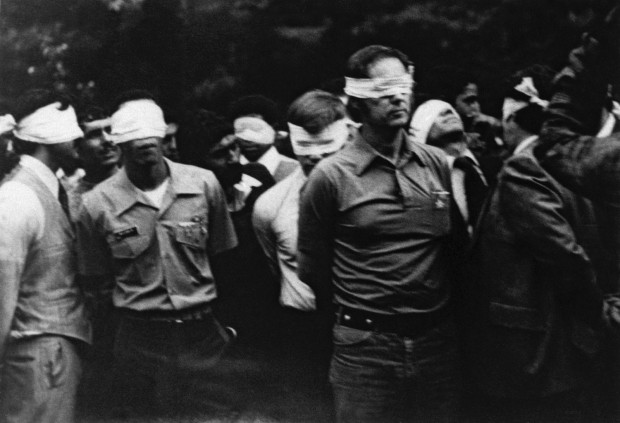
The Iranian Hostage Crisis, as it came to be known here in the U.S., set back American policy in the region for years, and the rise of Shiite power in the Middle East began.
In 1982, as the Lebanese Civil War raged on, and after Israel had been ordered to leave the area by the UN, Israel invaded Lebanon for the second time. President Ronald Reagan had initially condoned the act, however, after the death of some 18,000 people—most of which were Lebanese civilians—he intervened to demand a ceasefire. With the aid of American, Italian, and French troops, 6,000 PLO militants were evacuated from Lebanon, most of which ended up in the West Bank and Gaza.
U.S. troops had to immediately return to Lebanon when Israeli-backed Christian militias massacred up to 3,000 Palestinians located in the refugee camps of Sabra and Shatila, south of Beirut.
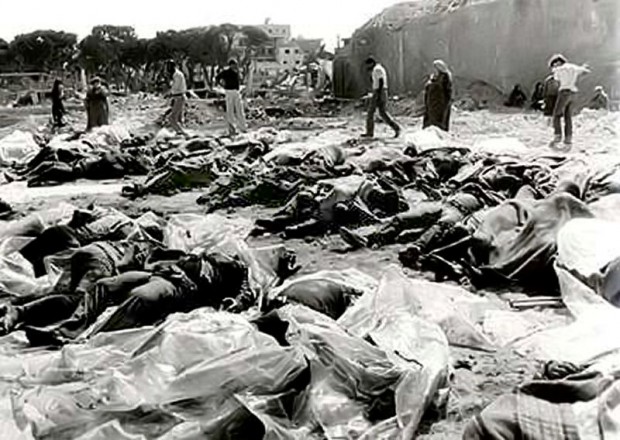
The U.S. began to face retaliation for their presence in the area with a series of bombings, and American troops left Lebanon shortly thereafter.
Reagan dealt with quite a few other crises as the Iranian-backed Lebanese Shiite organization, which came to be known as Hezbollah, took several American hostages in Lebanon. In 1986, the Iran-Contra affair revealed that Reagan had been secretly negotiating arms-for-hostages with Iran, which discredited his claim that he would not “negotiate with terrorists,” terrorists the U.S. ultimately helped to create as a result of their 1953 deception.
The U.S. continued to support Israel’s expansion into occupied territories throughout the Reagan administration, and also supported Saddam Hussein during the eight-year Iran-Iraq War, in the hopes Hussein could destabilize the Iranian regime and defeat the Islamic Revolution. He didn’t.

Iraq:
Saddam Hussein received support from the U.S. until August 2nd, 1990 when he invaded Kuwait. President George H.W. Bush immediately deployed U.S. troops to Saudi Arabia in Operation Desert Shield, later known as Operation Desert Storm, when Bush Sr. shifted strategy from defending Saudi Arabia to repelling Iraq from Kuwait (because Hussein might be developing nuclear weapons, according to Bush Sr.).
Operation Desert Storm was over after a 38-day air campaign, and 100-hour ground war—Kuwait was liberated. Bush Sr. established “no-fly zones,” but they didn’t keep Hussein from massacring Shiites and Kurds.
Somalia:
During the last year of his presidency, Bush Sr. launched Operation Restore Hope in which 25,000 U.S. soldiers, along with 10,000 additional soldiers from 24 other nations, were sent to Somalia in 1993 to “halt a famine.” Exactly how the U.S. thought military personnel were supposed to accomplish humanitarian work is beyond this Anon—supposedly the troops were there “to use all necessary means to establish a secure environment for humanitarian relief operations,” and reports love to state how the mass starvation in Somalia was significantly reduced by March of 1993.
What the mainstream media chooses to ignore, however, was the fact that soldiers were getting their jollies by raping, torturing, and murdering the Somalians they were supposedly there to help.

Pictured above is Kurt Coelus and Claude Baert, two Belgian UN “peacekeepers” who were part of the United States-led Unified Task Force (UNITA) in Somalia. In the image above, the two men are shown holding a young boy over a fire. The two men were acquitted of this crime due to “insufficient evidence,” with the court claiming that the incident was a “form of playing without violence.”
This argument is rather weak when coupled with the photo below of Canadian soldier, Master Corporal Clayton Matchee, posing with his now deceased torture victim—a Somali teen. Matchee was charged with murder. In a statement from Canadian journalist, Rex Murphy:
“We promised them peacekeepers, and… we sent them thugs.”
American soldiers weren’t innocent during Operation Restore Hope either. A young Somali journalist writes:
“… They [American troops] drive down the roads in their Humvees going so fast people scramble to get out of the way. If they don’t move fast enough, they are hit and knocked down, their carts are smashed, their loads destroyed. When there is a crowd, they fire weapons in the air first, then point them at the people, shout at them to get out of the way.
They fly in their Black Hawk Helicopters so low over the markets the stalls fly apart, the goods blow away, the dust rises and no one can see. People are screaming. Once they handcuffed a screaming woman to a Humvee. She wouldn’t stop screaming so one soldier struck her in the head with his weapon. A man came to try and translate for her. The soldier hit him in the abdomen. Only later would they listen. The downdraft from the rotors had ripped the woman’s baby from her arms and blown it away into the dust. We found the lifeless body later.
When they meet, they greet each other with “Hoo-uh” and slap high-five standing on their vehicles and make jokes about us as they point and laugh.
They call us skinnies and niggers. But they take any woman or girl they want. They feel they have the right to f…k whoever or whatever they want and after they are done they throw some money at them.
They will never win the support of the Somali people…”
Attacks were conducted on Americans in Somalia after a failed attempt to catch Mohamed Farrah Aidid, the leader of a Somalian militia, which resulted in the death of 18 American soldiers, and up to 1,500 militants and civilians. Aidid was never caught. Among those who were conducting the attacks on American soldiers, was Osama Bin Laden.
The Clinton administration saw the negotiation of the Oslo Accords, which recognized the legitimacy of the Palestine Liberation Organization. This agreement created a chance for peace between Israel and the Palestinians, but neither side seemed willing to cooperate—Israel refused to leave the West Bank, and the Palestinian Authority proved to be corrupt and powerless, making them unable to prevent the growth of violent groups. All chances Clinton had of working out a final peace treaty failed with the meeting of Israeli and Palestinian leaders at Camp David, after which the violence resumed (Foner, 2014, p. 1072).

In August of 1990, during Bush Sr.’s administration, sanctions had been imposed on Iraq by the Security Council after Iraq invaded Kuwait, and the U.S. refused to lift them until Iraq accounted for all of their “weapons of mass destruction.” We know now that there never were any weapons of mass destruction, but the sanctions imposed had a crippling effect on Iraq’s economy. By 1995, two years into Clinton’s presidency, it had been estimated that as many as 576,000 Iraqi children may have died of malnutrition, and yet, the U.S. did not lift most of the sanctions until May of 2003. Some sanctions persist in part to this day.
Afghanistan to the Iraq War:
Following the attacks on 9/11 (all controversy as to who was responsible aside), President George W. Bush received world-support when he led an attack on Afghanistan in October of 2001; however, his expansion of the “war on terror” to Iraq was much less well-received. In his State of the Union address in January of 2002, Bush Jr. accused Iraq, Iran, and North Korea of harboring terrorists and, once again, developing “weapons of mass destruction,” calling the three countries an “axis of evil” (Foner, 2014, p. 1108). None of those countries had any links to the attacks on 9/11 and, as previously mentioned, Iraq was not hiding any weapons of mass destruction.
To say Iraq was “out of shape” before the U.S.’s invasion is an understatement—Iraq, as well as most countries in the Middle East, had their fair share of internal problems well before the U.S. became involved; however, the United States has only made matters worse at every corner and, in many cases, they are the cause of some of the problems (the situation with Iran being a good example).
While the citizens of Iraq have been dying at the hands of their own corrupt leaders for decades, that doesn’t excuse the additional hundreds-of-thousands of deaths caused by American interference. Although this documentary focuses on women in Iraq, it still gives an in-depth view of life in this region of the world:
Because Barack Obama is the current U.S. president, and the ongoing events in the Middle East are still unfolding, this timeline ends at George W. Bush’s presidency. Fitting over 65 years of history into one report is not an easy feat, and we take into consideration that the above information is more along the lines of a rough outline. The purpose of this report is to give our readers a better understanding of the U.S.’s connections in the Middle East, the influence the U.S. government has had on the region, and how it corresponds to current events.
You want to support Anonymous Independent & Investigative News? Please, follow us on Twitter: Follow @AnonymousNewsHQ
This Article (A History of U.S. Influence on the Middle East) is a free and open source. You have permission to republish this article under a Creative Commons license with attribution to the author and AnonHQ.com.
Sources:
Fuccaro, Nelida (1997). Ethnicity, State Formation, and Conscription in Postcolonial Iraq: The Case of the Yazidi Kurds of Jabal Sinjar. Cambridge, England: Cambridge University Press.
Foner, Eric (2014). Give Me Liberty: An American History (4th ed.). New York, NY: W.W. Norton & Company.
Immartin. Hub Pages. Oct 21, 2011. (http://hubpages.com/hub/The-movie-Black-Hawk-Down-as-seen-by-a-cynic#)
Shuster, Mike. NPR. Aug 23, 2004. (http://www.npr.org/templates/story/story.php?storyId=3865983)
Tristam, Pierre. About News. (http://middleeast.about.com/od/usmideastpolicy/a/me070909b.htm)




